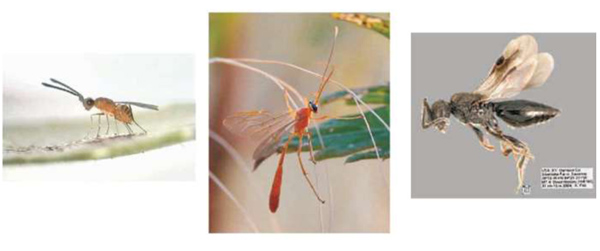People assume that these insects are actually burrowing into the wood since they often see frass or sawdust being pushed out of the holes they’ve entered. In their search for live beetle larvae, the wasps clean out the tunnels by kicking the frass out of existing beetle emergence holes. Since the wasps can’t tell if the hole was made recently or many years ago, they tend to clean out every hole they can find.
Parasitic wasps do not consume wood; therefore, borate treatments are ineffective treatment against them. In this respect they are similar to carpenter bees.
Some people get excited when they see 20 or 30 of these wasps flying around their log walls, but they are harmless and do not sting. They do no damage and are, in fact, beneficial insects since they reduce the population of wood boring beetles. Most of their activity occurs in the hot, summer months. Once the weather starts to cool a bit, they usually disappear. If you are really upset by these insects, you can spray your walls with Ortho Home Defense, Spectracide Bug Stop or similar products. Consequently, being somewhat adverse to the broadcast use of contact pesticides, we believe the best solution is to just to ignore them.
Three Examples of Parasitic Wasps:

